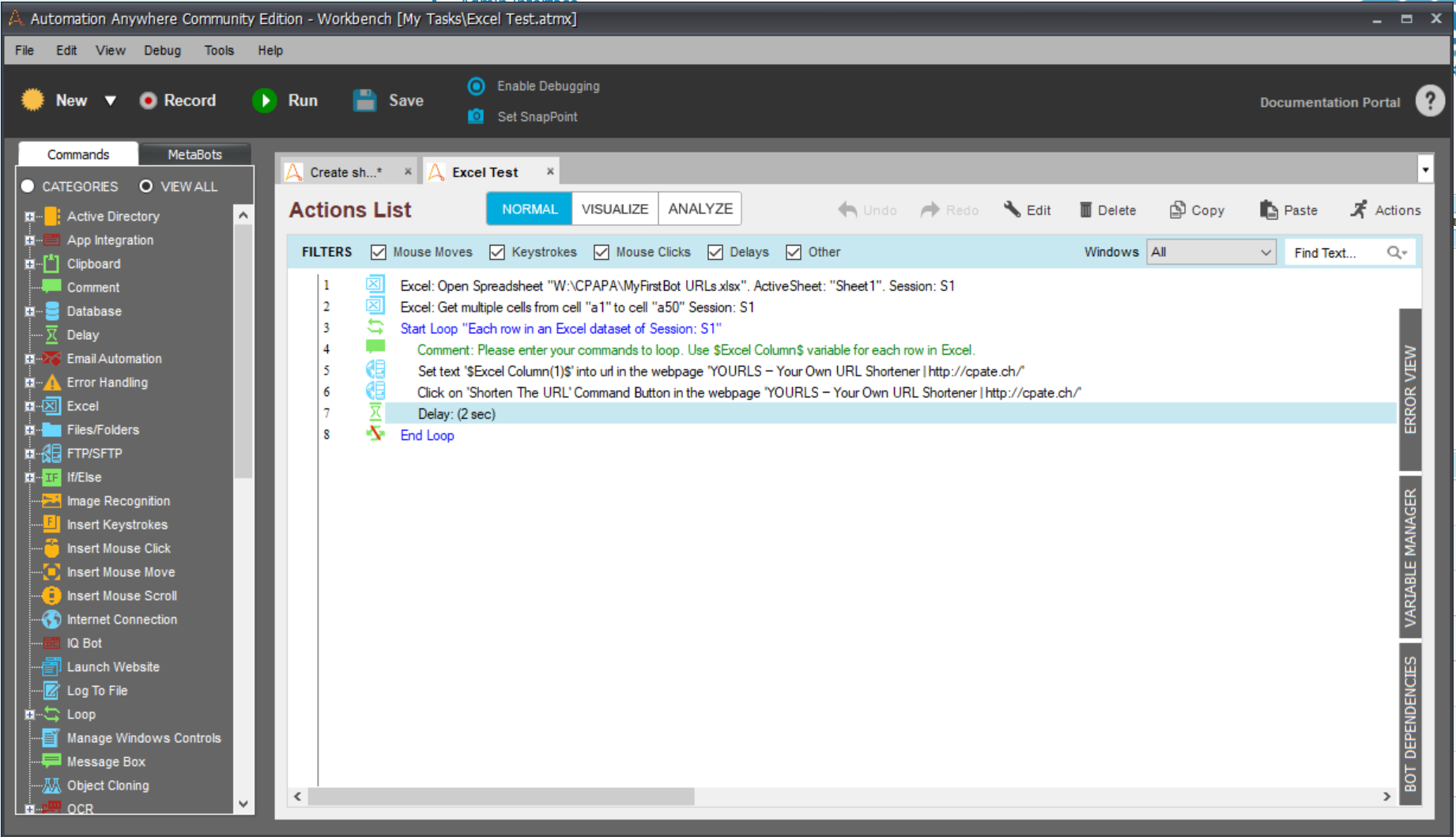Accounting
How Robotic Process Automation Tools Work
Many RPA solutions are designed to be used by business users like accounting professionals, and while some tasks will still require the assistance of an IT professional, with some training, these “low-code/no-code” tools can bring the power of ...
Apr. 21, 2022

The early stages of robotic process automation (RPA) are usually centered around automating routine tasks, such as copying data from an Excel sheet into a web form and pressing submit. This column will discuss some of the tools which are available to help users create these scripts, also called “bots” using low-code/no-code bot creation tools, which are designed for use by non-programmers (like accounting professionals) to automate simple tasks. These simple tasks can be combined into more complex routines, and over time, assembled into automated workflow routines. The completed bots can often perform repetitive tasks more quickly and more accurately than onshore or offshore human labor.
Many RPA solutions are designed to be used by business users like accounting professionals, and while some tasks will still require the assistance of an IT professional, with some training, these “low-code/no-code” tools can bring the power of programmed process automation to end users. In a low-code/no-code development environment, the goal of the platform is to provide enough structure so that non-programmers have enough wizards, structure, and help that they can use the application effectively while not crippling the productivity of expert programmers. Some of the tools used to help bridge the gap between business users and programmers include:
- Action recorders, which monitor and record the inputs while a human performs a task and are then used to replay those same actions (mouse movement and typing) repeatedly.
- Screen scrapers and OCR tools, which allow users to extract data from web pages, applications, and PDF files
- Spreadsheet interfaces, which allow users to record, store, retrieve, copy, and paste data from spreadsheet applications
- Action triggers, which automatically initiate a task when an event occurs (e.g. an e-mail message arrives, a file is placed in a specific folder)
These tools are combined with a structured development interface (like Automation Anywhere’s workbench) which uses menus and wizards to create, edit, and append the small routines created with the other tools into a larger, more complex solution. For example, I created a bot which logs into a website, retrieves a column of data from Excel, records each row of retrieved data into a form, and presses the “submit” button on the web page. This routine was created using the following steps:
- The action recorder was used to launch the web browser, log into the website, navigate to the web page with the form.
- The action recorder watched the inputs when I manually entered a sample record into the form, and then pressed submit to record it in the web application.
- A wizard-like structured development interface (workbench) was utilized to create a routine that opens an Excel workbook, selects a specific tab (sheet), and then extracts the data into the computers memory.
- The workbench was then used to create a bot which combined the instructions (code) and data from previous steps into a “loop” that entered the data from each row of the spreadsheet into the web form and pressed submit.
The total time investment required to create, troubleshoot, and test this bot was about 30 minutes (compared to approximately 10 minutes to manually key the fifty lines of data into the form), meaning that this routine will save time for the user after it is used 180 times. While this simple bot does not analytically review the data for reasonableness like a human could, the bot has a number of other advantages, including:
- The bot will work 24 hours a day, 7 days a week, and doesn’t require a lunch break or employee benefits
- Where humans can make an error keying data into a form, the bot will simply copy the data from the spreadsheet into the form, meaning that, assuming the data is accurate in the spreadsheet, the data recorded will be more accurate than the input from a human
- As long as the format of the website and the layout of the Excel spreadsheet do not change, the bot should not require any maintenance.
It is my belief that RPA represents a significant opportunity for the profession to allow our professional staff to perform more meaningful work, and the monitoring and troubleshooting of these bots will require your team to develop new skills. By automating the busy work associated with routine tasks like taking data from one application and entering it into another one, we can make our practices more efficient and help our teams have work which is both challenging and rewarding. While it will take months or years for your firm to develop and implement automation, your firm cannot realize the benefits of RPA until you make the required investments in your technology, people, and processes to effectively integrate it into your daily work routines.
